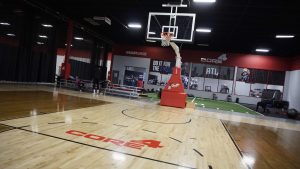While your careful planning and organization are critical to the success of your project, it will take the approval and support of local community leaders to make your vision a reality. For many sports facilities and complexes, the final project approval decision will come from the officials in your community. Sports Facilities Advisory can help you pitch your facility successfully. In this blog, we are offering some initial advice for preparing your pitch.
Preparing and Planning
The Sports Facilities Advisory team often discusses the importance of planning in almost every aspect of facility development. The more you plan ahead, the better prepared you are. This counts just as much for pitching your development plan as actually acting on it. The more details you have mapped out and on hand, the better your pitch will be.
From a feasibility study to a business plan, you need to spend the necessary time researching and putting together a full packet that you can use to present your idea to the necessary people. The planning you have done will be your foundation when you approach key decision makers with a proposal.
It will also give you a richer source of information when you are inevitably presented with questions. Important things you should include in your business plan include:
- Executive summary
- Description of your project or facility
- Market analysis
- Financial forecasting
- Competitor analysis
- Management and organization description
- A description of what your facility will offer
Find Out Who to Contact
As simple as it might sound at the beginning, finding out exactly who you need to contact in order to present your proposal can be a challenge. Depending on where you are planning to build, the people in charge of approving or disapproving the proposal may vary. How you contact them will also depend on your location. For example, you may need to get in touch with your City Council or your local Community Development body.
The sooner you find out who you are presenting to the better. Advanced knowledge of who the pitch is for and the kind of local amenities they manage gives you a better idea of how to tailor your pitch. Sports Facilities Advisory can help you identify and pitch to the right decision-makers.
Coming Up with Your Pitch
Developing the actual pitch is perhaps the most challenging part of this process. Whether you are nervous about speaking in front of people or nervous about the details of the project, there are some key steps you can take to make your pitch for funding more impactful.
Put Your Research Together and Simplify It
A pitch is an opportunity to present all of your information, but you need to be smart about how you do it. You should avoid overwhelming anyone with data and details, so consolidate what you have as much as possible.
If you give an effective pitch, you will likely be asked specific follow-up questions. This is when you can get into the more granular details. The following is a list of information that is included in most business pitches:
- Industry analysis (sports, recreation, etc.)
- Needs of the local community/town/city
- Marketing strategy
- Business model
- Competitor analysis (other facilities in the area providing similar services/amenities)
- Plan for implementation
- Financial projections and requirements
Tell a Story
People seek patterns by nature which is why you should consider putting your pitch into a narrative to make it easier to engage with. When presenting your recreation center or sports facility proposal, use a narrative to illustrate how it can improve the community so your proposal will be relatable and appealing. Using this tactic can also help you decide what essential information should be included initially, and what can be held back for questions later.
Avoid Over-Complicated Language or Buzzwords
An important part of pitching an idea is making it easy to digest. Remember that if you are successful, the more complicated details can come later. Part of making it easier to absorb is avoiding over-complicating the language you use. It can be tempting to try and impress your pitch audience with terminology, but it is more likely to turn them off to your idea through a lack of emotional engagement.
Have a Purpose
Telling a story with your pitch and selling your idea to your community’s decision-makers will never work unless you believe in it. Research and data are important but believing in the purpose behind building a sports complex or multi-use facility is absolutely essential. Why are you building it? How and why do you want to impact your community? The more confident you are in your purpose the more likely you are to achieve success.
Summarize It into an Elevator Pitch
An effective way of optimizing your pitch is to come up with an “elevator pitch”. An elevator pitch is a common term used to describe a short pitch that you can use to summarize a business, project, or idea concisely enough that you could pitch it during an elevator ride. Even if you never need to use this short form pitch, it can help you build confidence and break down your proposal into its essential parts.
Practice Your Pitch
Practicing your pitch is an important step that is often overlooked. The more familiar you are with talking about your proposal out loud in front of an audience, the better it will be. Ask people you know to be your surrogate decision-makers and have them listen to your pitch and ask you questions. The more you practice you get the more prepared you will be.
Combining the above with the hard data and facts you have gathered through effective research will allow you to create an effective pitch. Once again, as with anything else in facility planning, some of this will vary. Sports Facilities Advisory can help you with every detail of pitching or presenting your project.
Chose (or Be) a Point of Contact
Depending on how decisions are made in your community, you may not find out immediately whether or not your proposal is approved. If you need to wait for a decision or are expecting additional questions after the initial pitch, you need to make sure you have a defined point of contact.
Ideally, this should be you, since you are the one making the pitch and making the connection. Being the person who fields questions after the fact can help to reassure the decision-makers, establish a personal relationship, and foster trust. If you have to use someone else as a point of contact, make sure you follow up with responses personally as soon as possible.
Create Your Pitch with Sports Facilities Advisory
If you are looking for professional, detailed guidance to take your project from concept to concrete, contact the sports facilities development team today. To see what we can do for you, take a look at some of the previous and ongoing projects in our portfolio.






